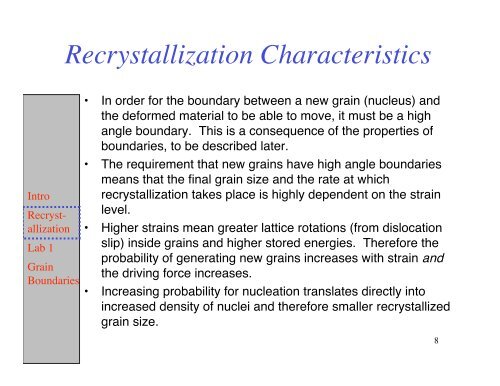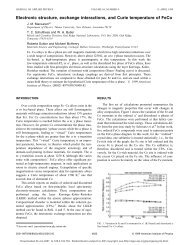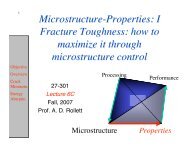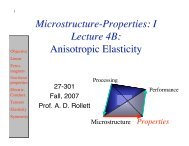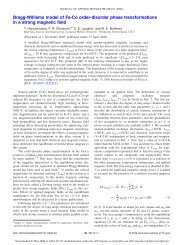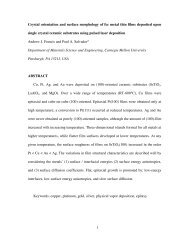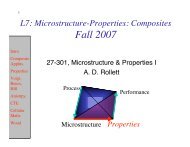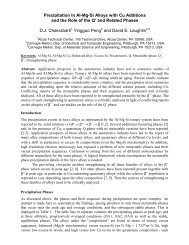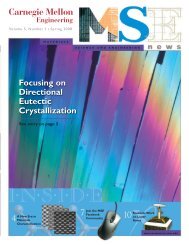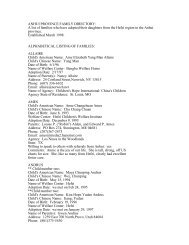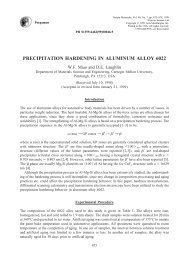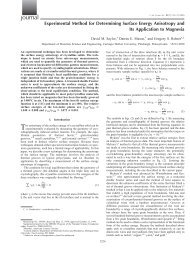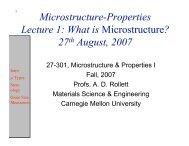Recrystallization Theoretical & Practical Aspects - Materials Science ...
Recrystallization Theoretical & Practical Aspects - Materials Science ...
Recrystallization Theoretical & Practical Aspects - Materials Science ...
Create successful ePaper yourself
Turn your PDF publications into a flip-book with our unique Google optimized e-Paper software.
Intro<br />
<strong>Recrystallization</strong><br />
Lab 1<br />
Grain<br />
Boundaries<br />
<strong>Recrystallization</strong> Characteristics<br />
• In order for the boundary between a new grain (nucleus) and<br />
the deformed material to be able to move, it must be a high<br />
angle boundary. This is a consequence of the properties of<br />
boundaries, to be described later.<br />
• The requirement that new grains have high angle boundaries<br />
means that the final grain size and the rate at which<br />
recrystallization takes place is highly dependent on the strain<br />
level.<br />
• Higher strains mean greater lattice rotations (from dislocation<br />
slip) inside grains and higher stored energies. Therefore the<br />
probability of generating new grains increases with strain and<br />
the driving force increases.<br />
• Increasing probability for nucleation translates directly into<br />
increased density of nuclei and therefore smaller recrystallized<br />
grain size.<br />
8


